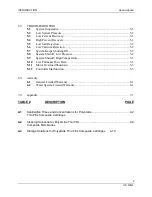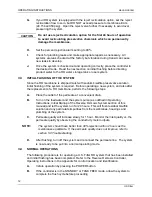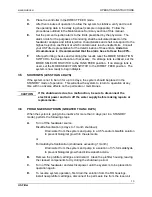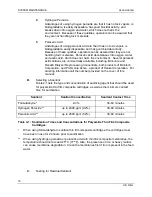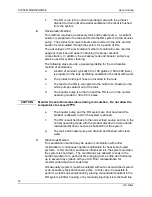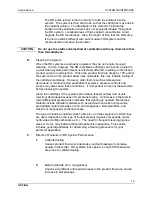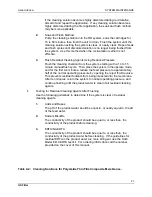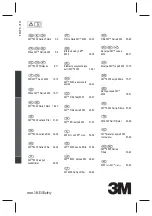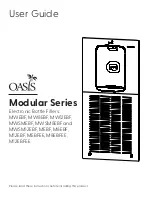
MANOWNROSM
SYSTEM MAINTENANCE
US Filter
15
4. 0
SYSTEM MAINTENANCE
4.1
GENERAL
Routine customer maintenance procedures consists of periodic replacement of the RO
membranes and the filter cartridges in the prefilter unit and sanitization of the RO
membranes and the storage reservoir. Cleaning/sanitizing is recommended every four
to eight weeks. The RO membranes should have a life of about 3 years if used
properly. In addition, the system's external surface should be kept clean by occasionally
wiping down all surfaces with a dust-free cloth and visually checking for cracked glass
on gauges, loose fittings, and broken or missing hardware.
Whenever prefilters or RO membranes are replaced, inspect the serviceability of the
o-ring seals prior to assembly. Inspect o-rings for signs of deterioration or cracking, and
replace as required. It helps to lubricate o-rings with glycerin before reassembly.
4.2
SANITIZING THE REVERSE OSMOSIS MEMBRANE(S)
Periodically, the RO Systems may require sanitization in order to maintain the
performance of the RO membrane, and to ensure a low bacterial count in the product
water. How frequently the system is sanitized depends on the quality of the water
needed for your particular application. Monitor bacterial levels in the feed and
permeates as needed. When bacterial levels increase above an acceptable level for the
application, sanitize the system.
The choice of the sanitizing agent depends on its compatibility with the polyamide thin
film composite RO cartridges and system components, and the agent’s effectiveness as
a sanitant. Three commonly used sanitants are formaldehyde, hydrogen peroxide and
peracetic acid.
CAUTION
Chlorine is not compatible with thin film composite cartridges, and must
not be used to sanitize them.
A.
Different Sanitizing Agents
CAUTION
When using formaldehyde to sanitize thin film composite cartridges, the
cartridges must have been in use for 24 hours prior to sanitization, or a
severe loss in flow rate may occur.
1.
Formaldehyde
Formaldehyde is one of the most effective agents used for sanitization. It
is compatible with most materials, is highly active as a biocide over a
relatively wide pH range, and easily penetrates the RO membrane, thus
ensuring that the downstream side of the filter is sanitized. But,
formaldehyde is difficult to flush from the system after sanitization, has an
objectionable odor, and causes irritation to the eyes and nasal passages.
In addition, formaldehyde is a suspected carcinogen. Even so,
formaldehyde is commonly used for sanitizing RO cartridges.
Formaldehyde, in solution, is purchased as formalin, which is a 37%
solution of the formaldehyde gas stabilized with methanol.


